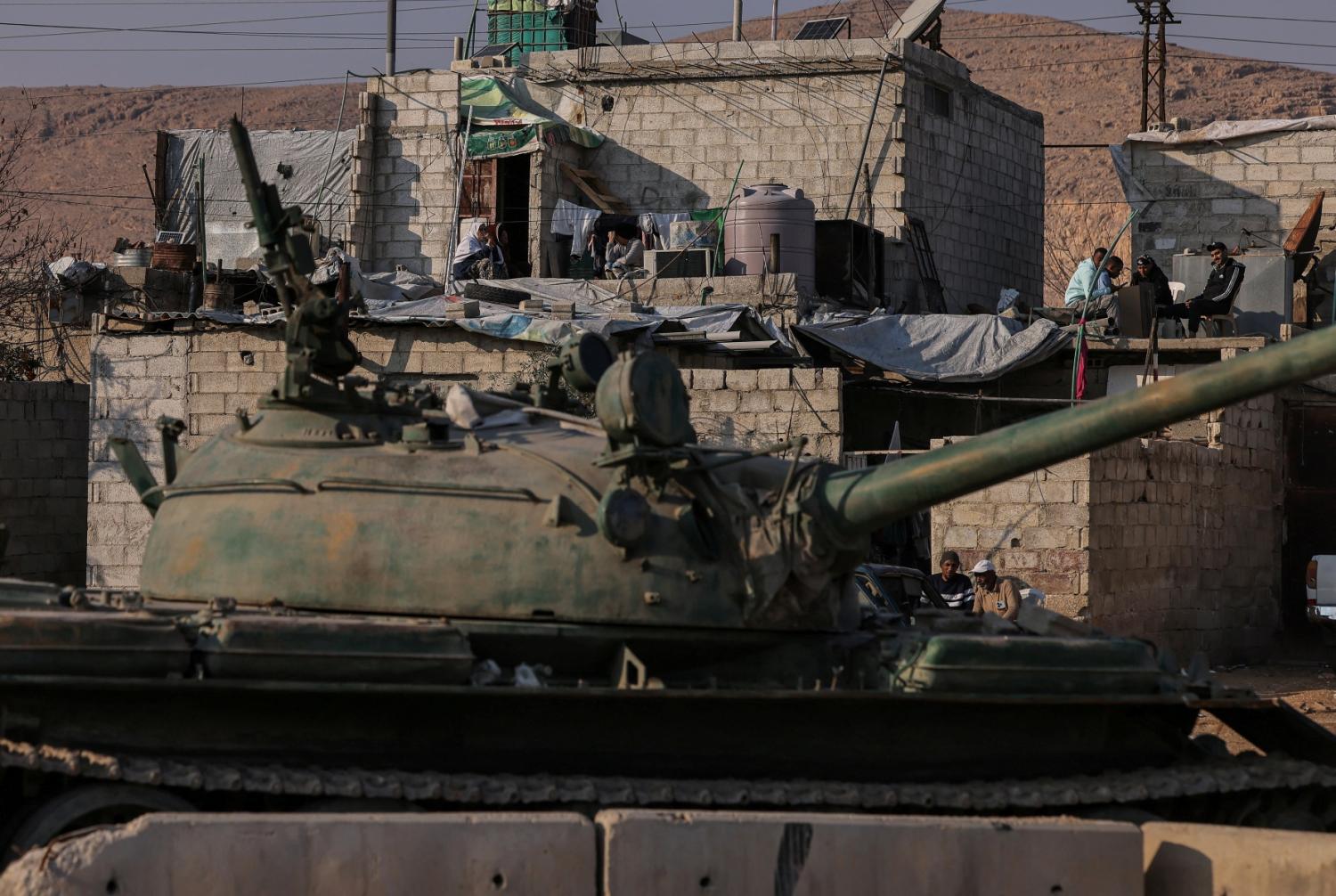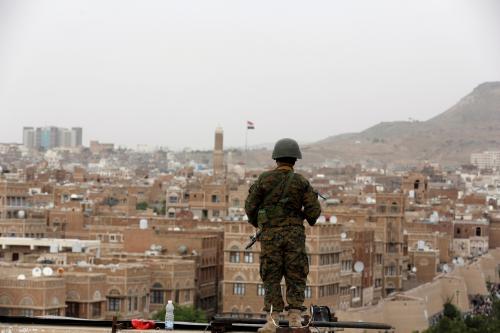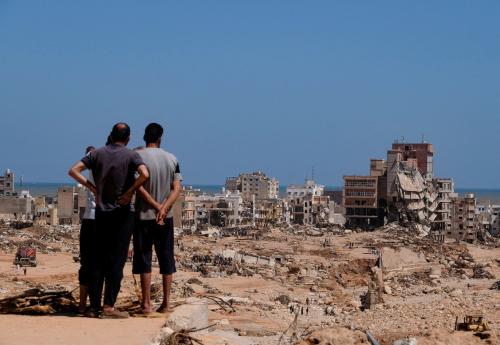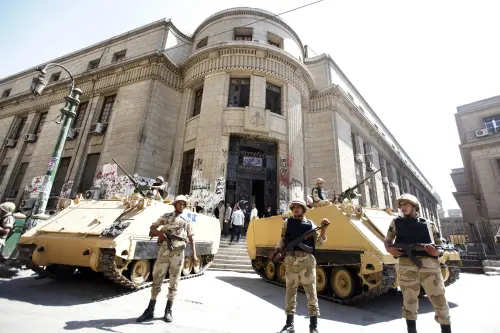This essay is part of the “Development, governance, and security in the Middle East: Obstacles and opportunities” project, a series examining how governance failures in the Middle East and North Africa have hindered stable development and human security, in partnership with the Japan International Cooperation Agency.
The current crisis in the Gaza Strip is not Gaza’s first crisis. In fact, Gaza has experienced a series of devastating escalations, including major wars in 2008, 2012, 2014, 2021, and 2022. All of these wars’ impacts were disastrous for Gaza’s population and significantly affected the territory’s infrastructure, health system, economy, society, education, and public and private sectors. Yet today’s crisis, beginning on October 7, 2023, and its consequences for Gazans are unprecedented.
The humanitarian crisis and immediate needs
After a year and a half of Israel’s war on Gaza, the challenges facing Gazans are enormous and interconnected. Some of the most pressing difficulties include:
Health care, trauma, and disease
According to an April 8, 2025, report from the United Nations Office for the Coordination of Humanitarian Affairs (UNOCHA), which cites data from the Gaza Ministry of Health, 50,810 Palestinians have been killed, including 8,304 women and 15,613 children; 115,688 Palestinians are injured; and thousands are reported missing or believed to be buried under the rubble. Almost all of Gaza’s hospitals have been partially or completely destroyed, leaving civilians with little access to medical treatment. About 63% (22 out of 35) of hospitals are partially functional; between 11,000 and 13,000 patients need medical evacuation abroad.
In addition, there are no clinics or medical centers that offer psychosocial support sessions or psychological guidance. Families have been left alone to cope with their children’s trauma, which is reportedly extensive. The conflict has traumatized hundreds of thousands of Palestinian youths who have seen their families killed and their futures destroyed. Young boys and girls are reported to have been subjected to relentless mental harm; some have been unable to stop crying. A study that conducted interviews with 500 Palestinian children and caregivers in June 2024 found that 96% of children in Gaza feel their death is imminent, which reflects the level of danger children experience.
Israel’s bombardment of Gaza has also annihilated the territory’s soil, air, water, and infrastructure, creating conditions for the outbreak of diseases. This danger is exacerbated by a severe medicine shortage. Polio has spread in the Gaza Strip due to unsanitary conditions and inadequate vaccination rates.
Food insecurity
As of October 2024, about 96% of Gaza’s 2.15 million people were facing acute food insecurity. Most of the population no longer has any source of income, and even those who have money may not be able to buy food after the destruction of all of Gaza’s food production and agricultural sectors during the war. Therefore, even if the war ends, food aid must continue to flow until Gazans can rebuild their normal lives. The real challenge is not in bringing food aid trucks, but in distributing that aid fairly to reach all residents through a strict monitoring program with tight security.
Education
According to the Global Education Cluster, which is co-led by UNICEF and Save the Children, as of April 8, more than 658,000 students have no access to formal education, and 88.5% of all school buildings (499 out of 564) have sustained damage. More than 13,289 students and 626 educational staff have also been killed during the war. Since the war began, the Ministry of Education in Palestine has paused formal education in the Gaza Strip. Schools have become shelters for hundreds of thousands of people who were forced to leave their homes under Israeli evacuation orders. For almost two academic years, students have not received proper education, negatively affecting an entire generation of children.
Although the Global Education Cluster, alongside other nongovernmental and community-led initiatives, has tried to launch temporary learning spaces to reintegrate students into learning environments, these cannot replace formal schools. Reconstructing schools and universities must be a priority in the aftermath of the war.
Housing and homelessness
The vast majority of Gaza’s population has been forced from their homes, with 1.9 million displaced since October 7, 2023. After the Israel-Hamas ceasefire agreement in January 2025, internally displaced people were allowed back to the northern Gaza Strip, but they found only debris and rubble where their homes once stood. Over 390,000 people have been displaced in the past three weeks by renewed fighting.
The United Nations estimates that rebuilding Gaza could take anywhere from 16 years to more than 80 years, depending on the pace of reconstruction. First, Gaza must be cleared of debris. UNOCHA’s April 8, 2025, humanitarian situation update estimated that the war has created over 50 million tons of debris, which could take up to 20 years to clear.
Meanwhile, over 1.9 million people need housing. Tents do not protect from the cold of winter, the heat of summer, or from insects and reptiles. During this long reconstruction period, it will not be possible to rely on temporary bathrooms. Infrastructure and a drainage system must be established at the temporary housing site. Each of the five governorates of Gaza should take a large, empty piece of land, equip it with integrated infrastructure, and deliver mobile container homes to the residents of the governorate according to the size of each family. Food and supplies can also be distributed at these sites to ease challenges related to distribution.
Economic challenges
In April 2024, Abdallah Al Dardari, the director of the Regional Bureau for Arab States at the U.N. Development Program, said that reconstructing Gaza could cost at least $40 billion to $50 billion. An October 2024 analysis by the United Nations found that the war has set back Gaza’s human development index, a statistical measure of a country’s average achievements in education, life expectancy, and education, by 69 years—to 1955.
The forced displacement of Gaza’s most talented and educated individuals, who fled Gaza to save their lives amid the war, has created another economic challenge. According to the Palestinian Central Bureau of Statistics, about 100,000 individuals left Gaza between October 7, 2023, and the start of this year, casting a long shadow over Gaza’s future. The departure of skilled professionals, academics, and entrepreneurs weakens Gaza’s social and economic fabric by draining the territory of the very minds needed for reconstruction and development. Many of these individuals, burdened by the traumas of war, may never return, leading to a potential “brain drain” that hinders Gaza’s long-term recovery and undermines its ability to build a resilient society capable of forging a path toward stability and prosperity. Their return will only be possible when security and political conditions are stabilized.
The challenges of governance
Gaza’s reconstruction will greatly depend on the security situation and who eventually rules postwar Gaza, as the new government will play a leading role in reconstruction.
Hamas has controlled Gaza since 2007, following its victory in the Palestinian elections and subsequent conflict with Fatah, which leads the Palestinian Authority (PA) in the West Bank. Its rule has been marked by tensions with Israel, internal pressures from the PA and the international community, and a debilitating blockade. Since October 7, 2023, Israel has categorically rejected any possibility of Hamas continuing to govern Gaza. Yet the question of who can take over leadership in Gaza is urgent and undecided.
This presents some serious obstacles to Gaza’s reconstruction. Past experiences in the Gaza wars of 2014 and 2021 suggest that any budgeting or donations for Gaza’s reconstruction must be under the control of a monitoring agency, be it international or governmental (i.e., the PA). Gaza’s reconstruction will require engaging civil servants from Hamas, the previous de-facto authority, as there are too few non-Hamas employees in Gaza.
Another matter is that donor countries require assurances that Gaza will not be destroyed again. For years, many countries have donated millions of dollars to reconstruct Gaza and then seen Gaza destroyed, which has made those countries reluctant to donate again this time. Gaza has already repeated the cycle of destruction, reconstruction, and destruction again on several occasions, and many initiatives attempted during previous rounds of reconstruction have failed completely.
Of course, the challenge of governance in Gaza is not simply a matter of political or military control. It is intertwined with the broader humanitarian disaster. Any future government will need the capacity not only to maintain security but also to respond to the humanitarian needs of the population.
A viable path forward
The first phase of the ceasefire between Israel and Hamas began on January 19, 2025, but its implementation was incomplete, and it collapsed on March 18, 2025. Until a new ceasefire is attained with the backing of international stakeholders, the release of hostages and Gaza’s reconstruction will be delayed. International stakeholders should convene a series of multilateral dialogues involving international, regional, and local actors to identify shared priorities, such as stability, security, and humanitarian relief, and establish a foundational agreement. The dialogues should include diverse perspectives on Gaza’s governance and should consider feasible steps to prevent future conflict with Israel.
In Partnership With
The Brookings Institution is committed to quality, independence, and impact.
We are supported by a diverse array of funders. In line with our values and policies, each Brookings publication represents the sole views of its author(s).










Commentary
Gaza’s day after: Reconstruction and governance challenges
April 24, 2025